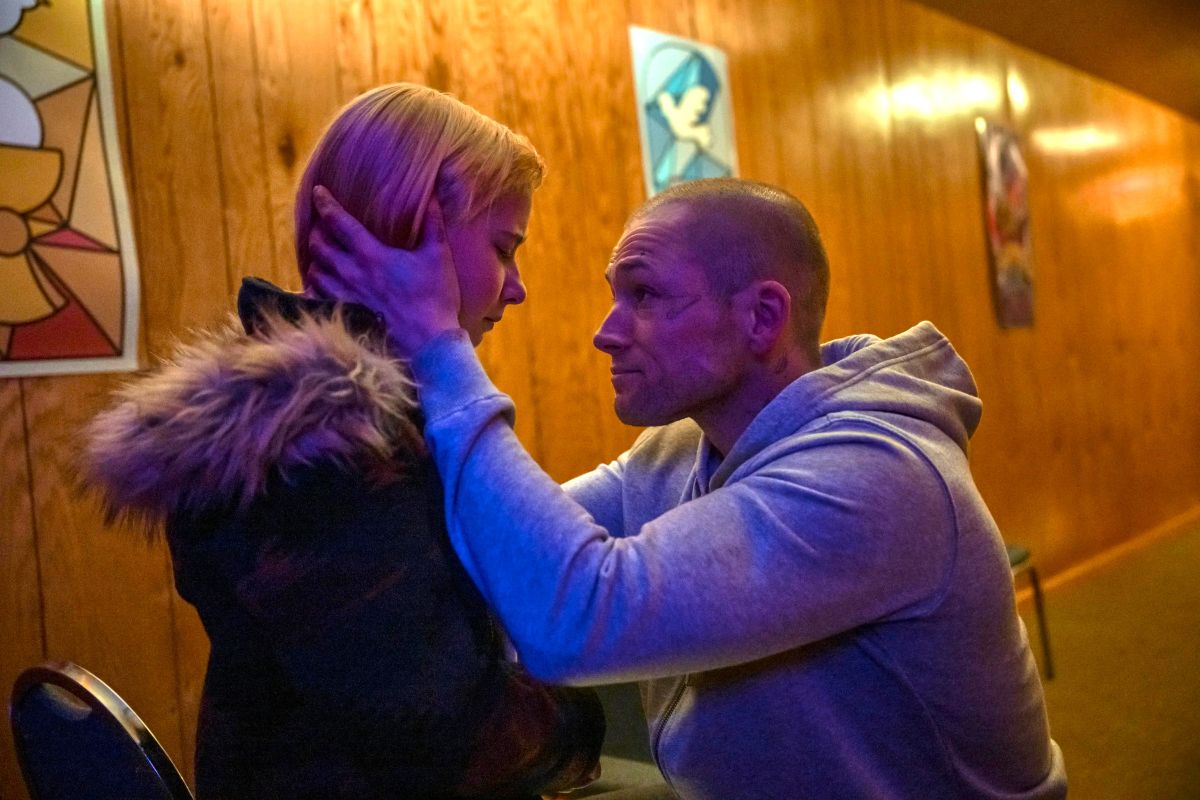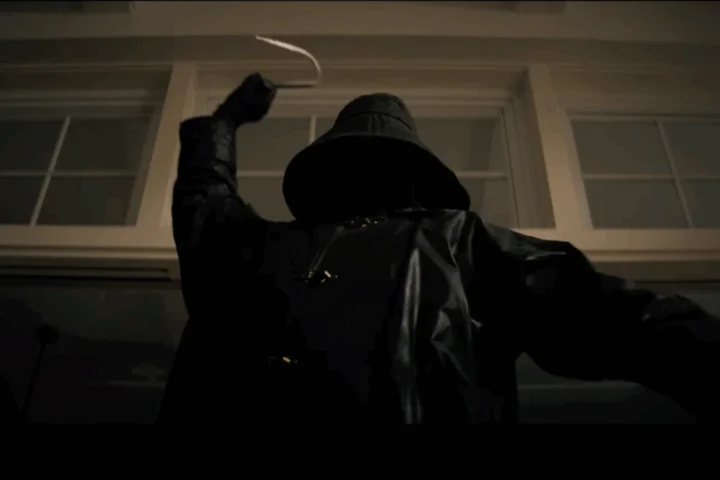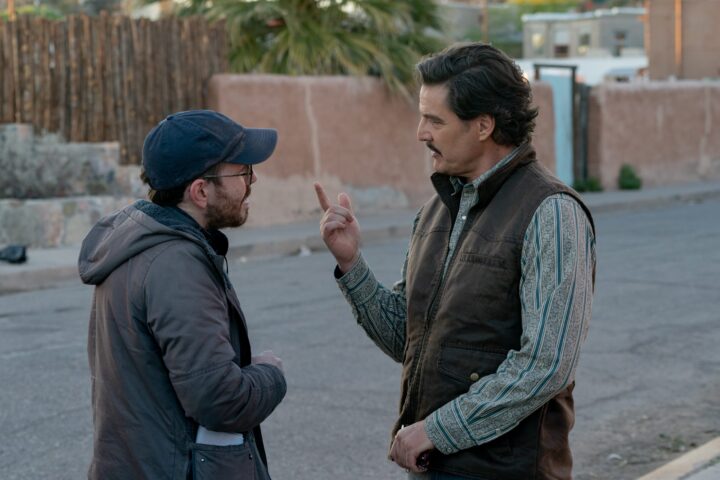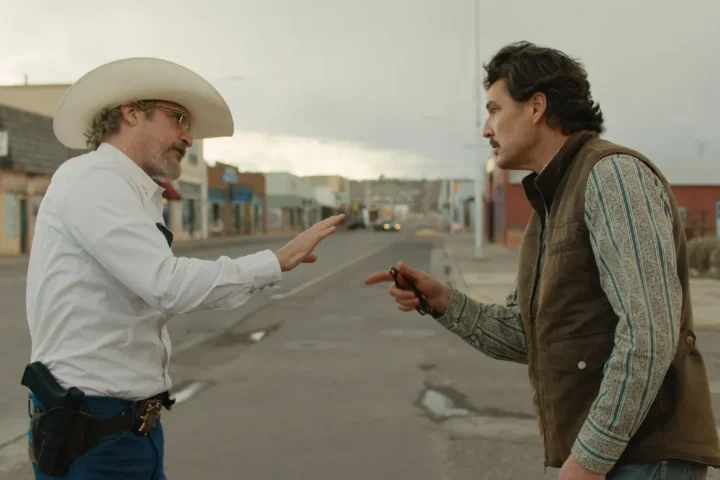In their new film She Rides Shotgun, director Nick Rowland and actor Taron Egerton deliver a tense experience fusing the grit and danger of a crime picture with the vulnerability of a fractured father-daughter relationship. Adapted from the novel by Jordan Harper, the story follows Nate (Egerton), a recently released convict attempting to protect, and reconnect with, his young daughter Polly while evading the violent remnants of his past. Filmed in New Mexico and set against the expansive backdrop of the American Southwest, the film balances genre intensity with moments of sensitivity.
In a recent conversation at Chicago’s Waldorf-Astoria hotel, Rowland and Egerton opened up about the creative process behind the film, the rewards of working with ten-year-old co-star Ana Sophia Heger, and the delicate task of bringing raw, lived-in emotion to a crime story that is as tender as it is brutal.
ChicagoFilm: She Rides Shotgun is a road movie, a father-daughter family drama, an action thriller and a coming of age film—but it’s all grounded in its relationship, which always stays front and center. How did you balance those many elements while keeping that emotional core intact?
Nick Rowland: I just love genre stories. I love Westerns, and frankly, I love American cinema. It’s always been a dream of mine—obviously, I’m not from America—but to make a film in a place like New Mexico, where so many of my favorite movies have been made; it felt incredibly exciting. Blending all of these elements wasn’t something I overthought. I tend to be attracted to stories that have a mix of tenderness and heart with brutality. There’s something subconscious about it—sensitivity rubbing up against danger and tension excites me. In terms of keeping it grounded, we wanted the world and this journey, which is at times violent and dangerous, to never feel cartoonish. There had to be real cost and consequence. A lot of that towing the line between tenderness and brutality came down to Taron and Anna. Taron can blend vulnerability and tenderness and heart with brutality and a kind of muscular energy, very stripped of vanity, and it felt very honest and real.
CF: I’ve seen so much of your work—Rocketman, Testament of Youth and Eddie the Eagle are among my favorites—but this felt like a very different side of you. When I saw you in the opening scenes I could hardly recognize you. What was it about Nate that made you want to take on this challenge?
Taron Egerton: Yeah, definitely. I think fatherhood is a theme that’s started to mean more to me as I’ve entered my mid-30s. I’m not a father myself, but it’s something I wanted to explore on screen. I also think I’m at a point in my life and career where I have a bit more agency in the choices I make. This film is very reflective of the movies that I find most engaging. Nick is all about discovery and play—even under pressure—and that really appealed to me. When I first read the script, I wasn’t sure I was right for the role, which was a really good reason for me to do it. I want to do things that feel like they are a stretch and a challenge. My life is nothing like Nate’s, but I still feel I understand him.
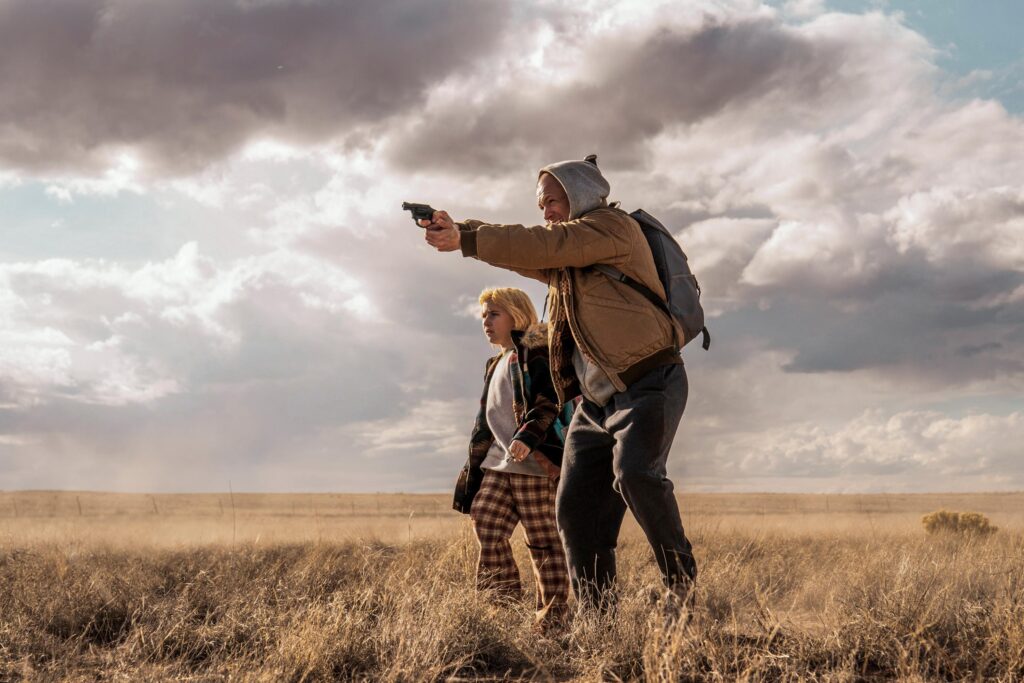
You mentioned “discovery and play.” That definitely came through in your dynamic with Ana-Sophia Heger. You have some very tender moments together, such as the conversation about the gun and the scene together in the diner. Can you talk about working with a ten-year-old on such intense material?
TE: Nick created this amazing environment where the energy was always flowing and keeping things feeling like they would never stop. He encouraged the crew to be fluid and available, especially important when working with a ten-year-old. Some of the most magical moments happened when we weren’t acting, but just getting lost in the moment—like the haircut scene, or when we’re at the truck stop chapel with the crooked cop, or even the quieter moment when she’s dressing my leg. It wasn’t the kind of call ‘action’ and do the scene approach; it was more dreamy and nebulous. It’s a way of working that really requires you to go with a filmmaker. You can’t doctor or edit the performance or control the parameters of it, and I really enjoyed that. It’s very freeing. There’s this moment that really stayed with me, when she mentions her mother. Nate becomes very emotional, and I didn’t know that was going to happen. I didn’t know that I was going to be emotional hearing about my dead wife, someone we never see in the film. It moves Nate and he cries at that moment. I cannot tell you how magical it is when something like that happens. I love that moment. I get teary eyed, and then Ana responds to my emotion. That is so precious to have captured on film and I will cherish it because it’s all real. Moments like this feel very real to me in the world.
CF: I also loved how ill-equipped Nate is at the beginning—yet so determined. Even though he’s not ready, he has to do this.
TE: Yes, that’s right.
Nick, I want to ask you about the look of the movie. I’m a sucker for wide-open spaces of the American West, and the Southwest is dramatically used here, as Nate and Polly travel through on their journey. You are working with Wyatt Garfield, a terrific DP.
NR: Yeah, absolutely. Everything we did—story, cinematography, production design—it all branches from the same tree. The mantra I gave everyone was “confident curiosity.” We weren’t locked into any single vision. We wanted to respond to the gifts in front of us. I came to New Mexico expecting desert heat, but it was November and it was freezing. I didn’t realize how cold the desert got in the winter. But that cold gave the film a freshness we didn’t expect. Also, we can’t forget that much of the story is seen through the eyes of a ten-year-old. That gave it a kind of rare, mythic quality. Her perspective dictated a lot of the choices when it came to design and cinematography. And we designed the cinematography to be flexible; to help us find those unexpected moments. It’s also about being open and knowing that the most beautiful version of what we’re reaching for will present itself to us. It’s not fixed or locked in our minds, but about us exploring together. So there is a looseness, and a lot of the cinematography was designed to be quite flexible to find those moments of gold.
CF: Speaking of that ten-year-old, I admired what you did with Polly at the end of the film. In just the last few minutes of Ana’s performance, you can see that she’s not the same person. It’s a transformation.
TE: Thank you so much. I actually wasn’t on set that day, and when Nick showed me that scene, I just said, “My god. You mustn’t touch it. It’s perfect.”
This interview has been edited for length and clarity.
